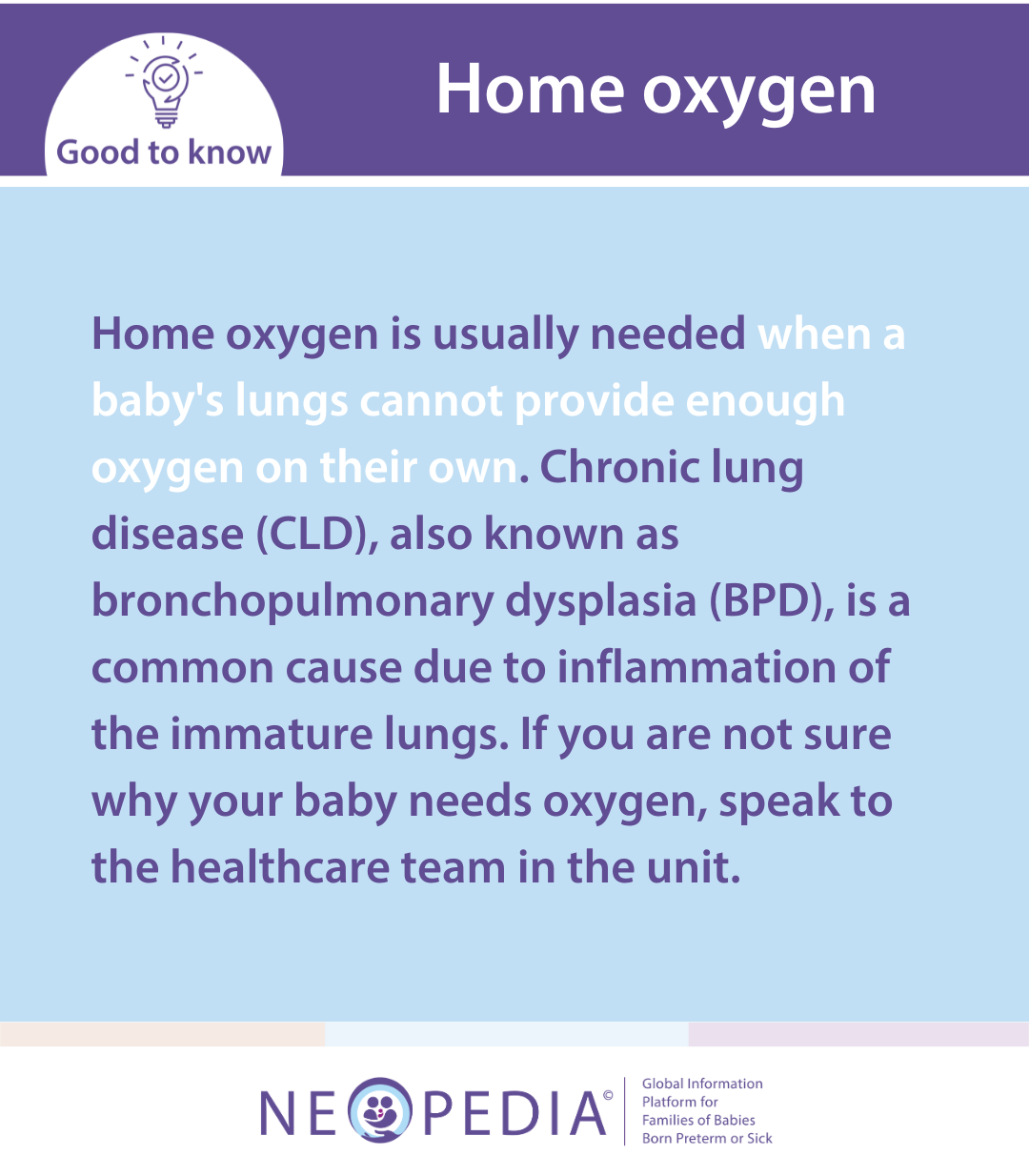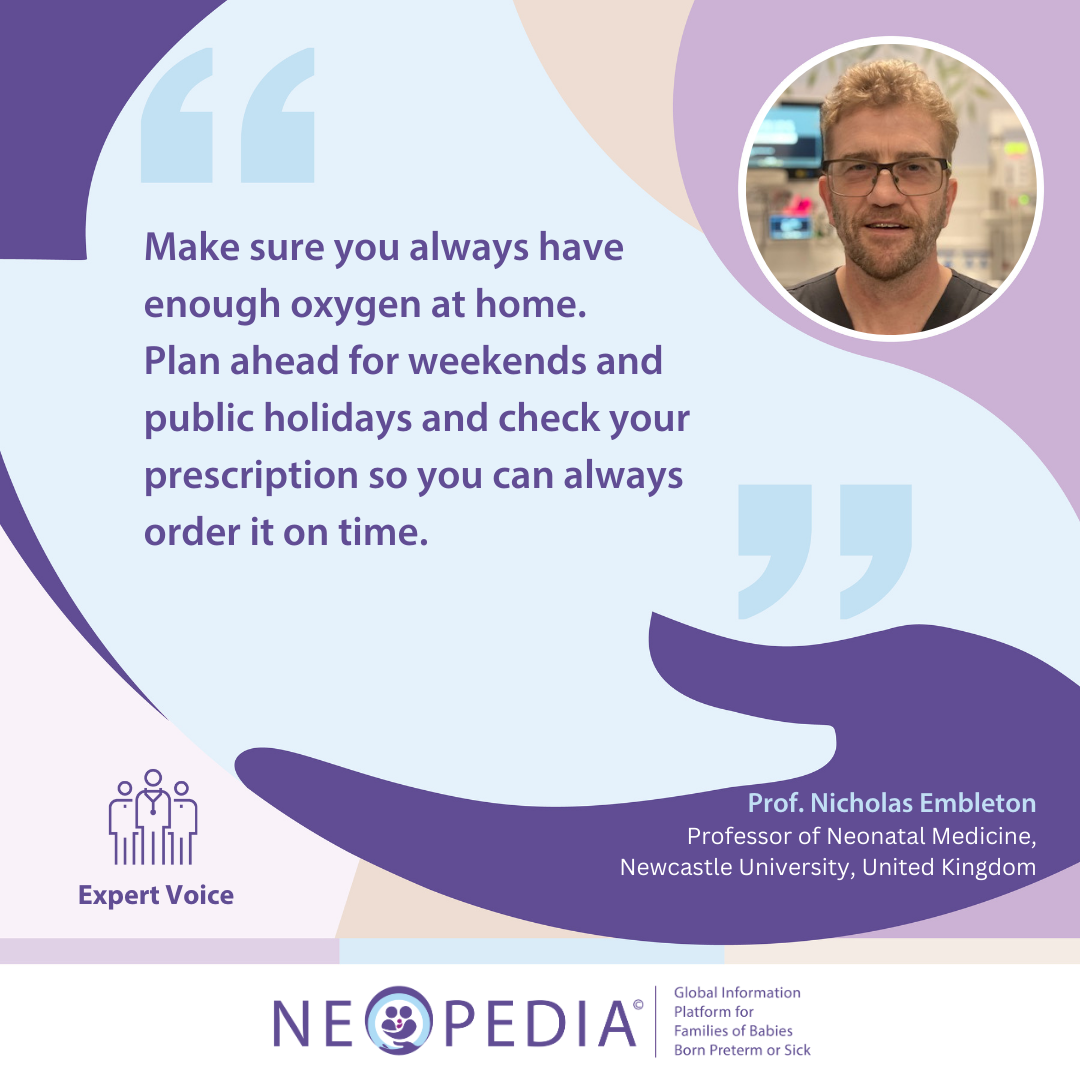
Some preterm or sick babies may need oxygen at home to help them breathe. This is provided through a tank or cylinder that delivers oxygen via a small tube placed under your baby's nose. While this might feel overwhelming at first, healthcare professionals will explain everything clearly and give you the support you need to feel confident using the equipment. Do not hesitate to ask questions if anything is unclear.
Before going home, a discharge meeting with healthcare professionals will be set up to discuss your baby’s oxygen needs and address any concerns. In most cases a healthcare professional will also visit your home to help with practical matters like where to store the oxygen and how to set up electrical points.
Before arranging for oxygen equipment for your baby, your community neonatal nurse⍰ or healthcare professional will assess your home to ensure it is suitable for oxygen use. They will complete the necessary consent and address potential safety issues. Once this is done, the NICU care team will place an order detailing the amount of oxygen needed. The supplier will then contact you to schedule delivery and installation. In most regions, oxygen equipment is provided by designated suppliers who also arrange maintenance and emergency support. You will be provided with training, information packs, and emergency contact numbers from the supplier.
Healthcare professionals will advise you on the appropriate flow rate of oxygen for your baby. Do not change the rate without consulting your health professional team. Monitoring oxygen every few days or weeks is often used to guide adjustments. The oxygen level may change over time as your baby's needs change. However, this will always be assessed by a healthcare professional.
The NICU care team will give you emergency contact details. If you suspect that your baby is not getting enough oxygen, is having difficulty breathing or appears to be seriously sick, call the emergency line immediately. Your oxygen supplier will also provide a 24-hour emergency contact number.
Moving around with oxygen can be challenging. The safest method is to move your baby first, then move the equipment. Long tubes may be provided to help with mobility. Your baby may be monitored without oxygen for a short period before discharge to make sure they can cope with a short interruption.
Portable oxygen is available for use when you want to take your baby outside the home while they are on oxygen. These cylinders come with a carry bag for easy use. Before leaving home, check the flow and contents of the oxygen to ensure you have sufficient supplies. Some transport companies may not allow oxygen, so check their policies in advance.

Home oxygen safety and usage tips

